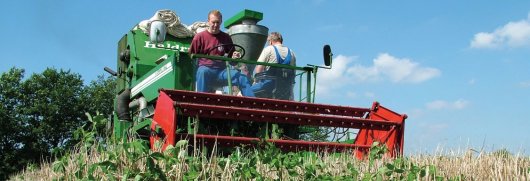ResidueGas

Improved estimation and mitigation of nitrous oxide emissions and soil carbon storage from crop residues
Crop residues provide large inputs of carbon (C) and nitrogen (N) to soils and contribute to the net GHG balance of soils in different ways. They are included as a key component in national emissions inventories for nitrous oxide (N2O) from agriculture. Residue are also a major contributor to sustaining or enhancing soil organic carbon (SOC) and N contents and thus soil fertility. Depending on the amount of C and N in crop residues and their contributions to N2O emissions or to the SOC balance residues might increase or decrease the GHG footprint of agroecosystems. Studies have shown that N2O emissions from N in crop residues vary considerably depending on residue quality, residue management and soils. This is currently not reflected in emissions inventories or likely not sufficiently in simulation models. This makes current emission inventories uncertain and in many cases biased. Lack of knowledge and precise model estimation of N2O emissions and SOC storage from crop residues limits the design of improved crop management systems for net GHG emissions reductions.
ResidueGas will document an improved methodology to quantify N2O emissions from agricultural crop residues management, including standards for estimating the amount of N in residues and improved emission factors for crop residue that include effects of residue quality, management, soils and climate on emissions. ResidueGas will further identify and communicate best practice for crop residue management strategies with respect to their net greenhouse gas effect in terms of N2O emissions and SOC storage. The transnational team in ResidueGas has the necessary breadth of high-level expertise to undertake the task, covering knowledge on relevant cropping systems, measurements of GHG emissions (N2O and SOC) at both field and lab scales, access to existing data on crop residues and emissions, expertise in biogeochemical modelling of GHG emissions and knowledge on GHG inventory reporting at farm and national scale.
Coordinator
Aarhus University, Denmark
Prof. Jørgen E. Olesen
Project partners
Swedish University of Agricultural Sciences, Sweden
NMBU - Norwegian University of Life Sciences, Norway NORSØK (Norwegian Centre for Organic Agriculture), Norway
Scotland's Rural College, United Kingdom
Karlsruhe Institute of Technology, Germany
RSK ADAS Ltd, United Kingdom
Institut National de Recherche en Agronomie (INRA), France
Total requested funding
1,376,000 €
Project duration
36 months
Project website and social media
https://projects.au.dk/residuegas/
NEWS from ResidueGas

The ResidueGas held a meeting on 2-3 March 2020 at the INRAE facilities in Reims, France. The meeting was held in the shadow of the advancing corona crisis. ResidueGas addresses the estimation of N2O emissions from soil amended with crop residues. The results of the project illustrates the importance of the large variation in quality of crop residues and their management on nitrous oxide emissions. Large N2O emissions from crop residues are associated with low residue C:N ratios; however, residue C and its degradability are also important for emissions. ResidueGas has developed a database for residue quality, and the effects on both quality and soil incorporation has been clearly document in field and laboratory experiments. The project is currently exploring other sources of data as well as modelling for developing new emission factors to for national inventories and for evaluating measures for mitigating these emissions.
